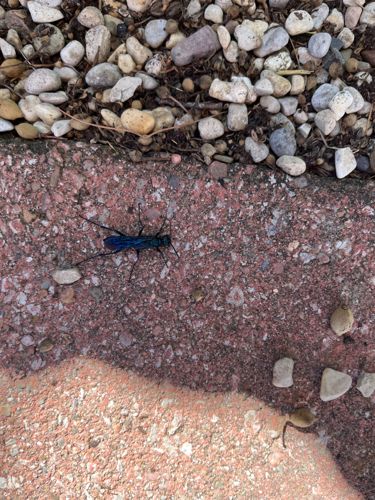Tarantula Hawk Wasp
Scientific Name: Pepsis or Hemipepsis species (there are many species within these genera)
Order & Family: Order Hymenoptera, Family Pompilidae (Spider Wasps)
Size: Typically 1.5 to 5 cm (0.6 to 2 inches) in length, making them among the largest wasps.

Natural Habitat
Tarantula hawks are typically found in arid and semi-arid regions, deserts, grasslands, and scrublands where their tarantula prey are abundant. They can also be found in more urbanized areas if suitable habitat and prey are present.
Diet & Feeding
Adult tarantula hawk wasps feed on nectar from flowers and sometimes fruit. Their larvae are carnivorous parasitoids, feeding exclusively on paralyzed tarantulas.
Behavior Patterns
Tarantula hawks are solitary wasps. Females hunt tarantulas as host for their larvae. They paralyze the tarantula with a sting and drag it back to a burrow, then lay a single egg on the spider's abdomen. The larva burrows into the tarantula and consumes it from the inside out. Adults primarily feed on nectar and fruit. They are generally not aggressive towards humans but will deliver an extremely painful sting if provoked.
Risks & Benefits
The primary risk to humans is their sting, which is considered one of the most painful insect stings in the world, though typically not medically dangerous unless an individual is allergic. They are considered beneficial in their ecosystem by controlling tarantula populations. They are also pollinators when feeding on nectar.
Identified on: 8/31/2025